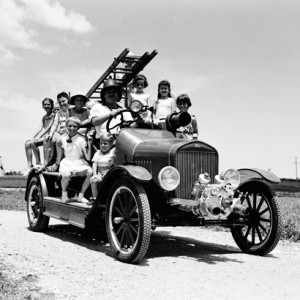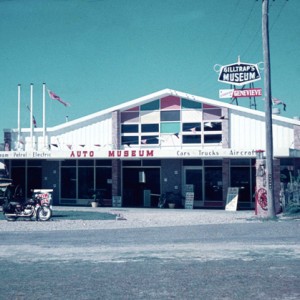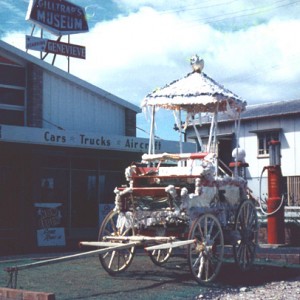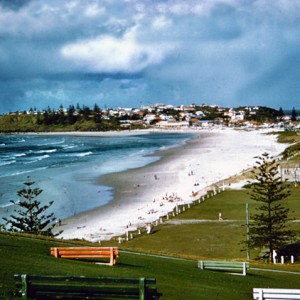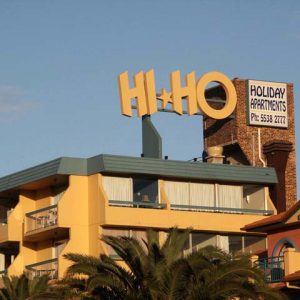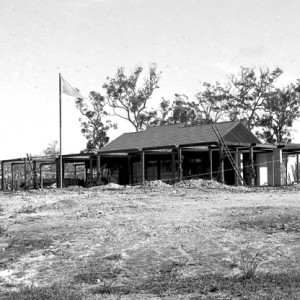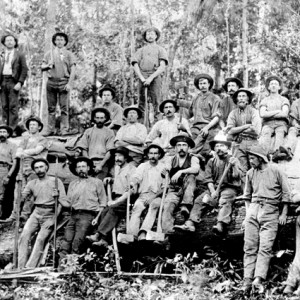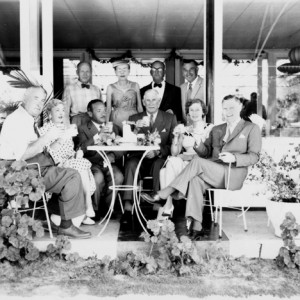
George Gilltrap thought it was important for future generations see the transition from horse and animal power to mechanical power by having a display of exhibits in working order that could travel. This concept was the foundation for his Auto Museum and the first car he collected was a Stanley steam car around 1939. While studying veteran car museums in the USA and Europe during 1957, Mr Gilltrap negotiated with Norman Reeves to purchase ‘Genevieve’, the 1904 Darracq which had starred in the film of the same name and was one of the best known veteran cars in the world.
In 1959, the Gilltrap family moved to the Gold Coast from New Zealand with 30 cars and, on 6 May 1959, the South Coast Bulletin announced that a permit had been granted by the Council to open a ‘museum of transport and Australian history in Creek Street, Bilinga.’
The museum was opened in September 1959, with the State Transport Minister Mr Gordon Chalk attending, riding a penny-farthing cycle and having a short drive in ‘Genevieve’. The museum became one of the attractions that tourists could visit while holidaying on the Gold Coast but, unlike many museums, the cars were operational and the exhibits worked. Daily demonstrations and children’s car rides were a popular feature with the historic Australiana collection adding extra interest.
An Auto Museum souvenir catalogue from 1969 listed the vehicles held in the museum at that time. It included: 31 veteran and Edwardian cars from 1899 to 1918; 29 vintage vehicles from 1920 to 1930; five post vintage from 1934 to 1955; 12 commercial vehicles; five fire engines; nine tractors and farm equipment from 1900 to 1925; 11 motorcycles from 1901 to 1929; three locomotives from 1910 to 1923; six cycles; four aircraft and aircraft engines. There were also horse drawn vehicles including wagons and an ambulance, coach, cart, carriage, rickshaw and surrey.
Mr Gilltrap died in March 1966 and other family members continued the business. At that time there were a small number of tourist attractions on the Gold Coast run by one person, or family, and the Auto Museum remained a high profile tourist attraction for 22 years.
By the 1980s the Gold Coast had grown to have a larger number of attractions and theme parks including the Magic Castle at Miami and Sea World on The Spit. George Gilltrap Jr. wanted to change the format of the exhibition and held an onsite auction at Coolangatta where car enthusiasts bought many of the exhibits. Amongst the items auctioned was a Cobb and Co. horse drawn carriage that had been built between 1865 and 1873 that sold for $13,500.
In 1981, the Auto Museum was relocated to the new Dream World Theme Park where modern buildings would enable the cars to be displayed in a way that met international standards. In 1989 the Dream World display was auctioned in Surfers Paradise. It was thought that ‘Genevieve’ would return to England and that the car was still capable of taking part in the famous London to Brighton Rally, the biggest veteran car race in the word.
- Vintage fire engine from Gilltraps Auto Museum, circa 1960. Photographer Alexander McRobbie
- Gilltraps Auto Museum Kirra, 1959. Photographer Laurie Holmes
- Display outside of Gilltraps Auto Museum, 1958. Photographer Laurie Holmes
Sources of information and further reading
- George Gilltrap’s Gold Coast Auto Museum. Booklet 1965.
- George Gilltraps Gold Coast Auto Museum 1969 Souvenir Catalogue.
- South Coast Bulletin 23 September 1959.
- Gold Coast Bulletin ‘Panorama’ 1981, page 203.
- Gold Coast Bulletin 18th July 1981, page 5.
- Gold Coaster 19th August 1989.
